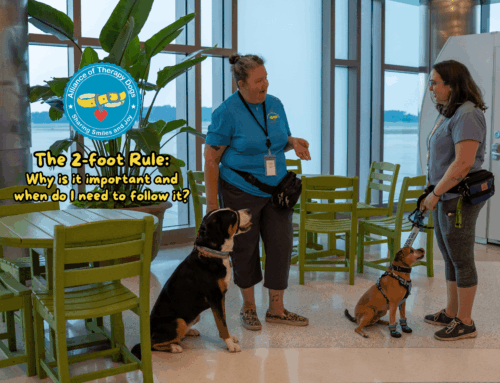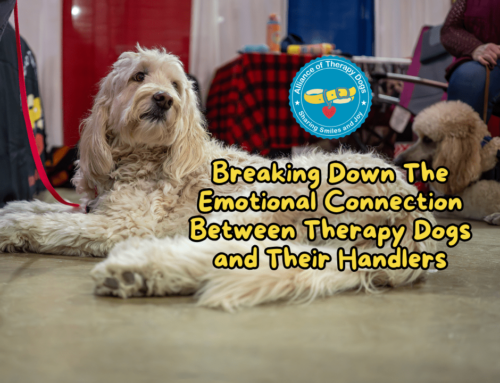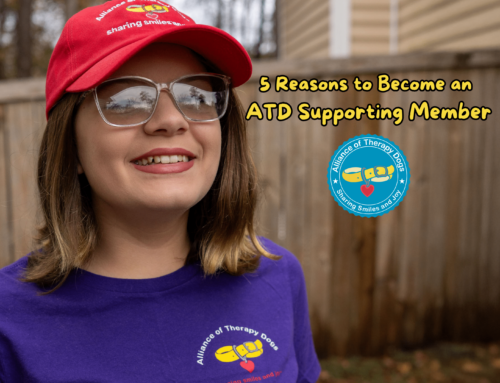Hospice Therapy Dogs
In the challenging stages of end-of-life care, each moment of joy becomes a precious gift, which is why hospice therapy dog visits are known to be treasured for hospice patients and their loved ones. There is much more to therapy dogs than just their cuteness. They offer warmth and connection that can make a difference in a hospice patient’s limited days. By providing emotional support, physical comfort, and moments of cheerfulness, therapy dogs help patients and families find solace and support during life’s most difficult moments.
Emotional Support and Comfort
Hospice care involves providing support and comfort when life’s journey is nearing its final chapter. Therapy dogs have proven to be a wonderful addition to that care, since they excel at sharing smiles and joy. The presence of a calm, affectionate dog can reduce feelings of anxiety, loneliness, and sadness that come to everyone involved in end-of-life care. The unconditional love and non-judgmental nature of hospice therapy dogs can help create a comforting atmosphere. They allow hospice patients to be vulnerable and express their emotions. Therapy dogs are present and engaged, offering a silent, empathetic and understanding that’s often more powerful than words.
Pawsitive Paws & Playfulness
A pawsitive therapy dog trait is they have a knack for sensing human emotions. They instinctively know when you need a nuzzle or a playful distraction. When a therapy dog walks into a hospice patient’s room, their presence naturally lifts the mood, even if just for a few moments. Their presence can help reduce blood pressure, reduce anxiety and lower stress levels. For hospice patients, the repeated motion of stroking a dog’s soft fur can provide a distracting relaxation and can even help some patients temporarily forget about their physical discomfort. At a time when hospice patients may be facing the emotional weight of their condition, therapy dogs offer a welcome respite. Their playful antics, affectionate nature, and ability to connect with people are some of the reasons therapy dogs are able to bring moments of joy and laughter to hospice facilities. This can be a refreshing contrast to the often somber atmosphere of hospice care.
Bringing Families Together
Hospice therapy dogs can help bring families together during a difficult time. Their friendly demeanor can act as an icebreaker, sparking conversations between patients, family members, caregivers and hospice staff. This can be particularly meaningful for hospice patients who may have strained relationships with family members. The presence of a therapy dog can ease tension in the room and encourage people to smile and let their guard down. A friendly dog can make a child feel more relaxed when visiting a hospice facility, which may seem scary or overwhelming. Therapy dogs can help bridge the gap between generations, helping to manage difficult conversations and tearful moments.
A Break For Caregivers
Being a caregiver for a loved one can take a toll on their emotions. When a therapy dog visits a hospice patient, it allows the caregiver to have a little break. Hospice therapy dog visits can enable the caregiver to recharge (even if it’s for a few moments) and leave the room if needed. These visits also let the patient and the caregiver know they are not alone in this arduous journey.
Bringing Your Therapy Dog To See A Hospice Patient
While we’ve shared the many benefits therapy dogs can provide hospice patients, it’s important to note that not every therapy dog has to be a hospice therapy dog and not every handler has to do hospice visits. Sometimes a handler and their therapy dog will visit a hospice patient and realize it may be too emotional for them or it’s not a good fit for their therapy dog. If hospice care is not up your alley there are several different facilities you and your dog can visit such as schools, libraries, airports, or military bases.You can also connect with the ATD office or talk to ATD members about therapy dog visit ideas. After all, we’re all about sharing smiles and joy, and that goes for therapy dog handlers too.






